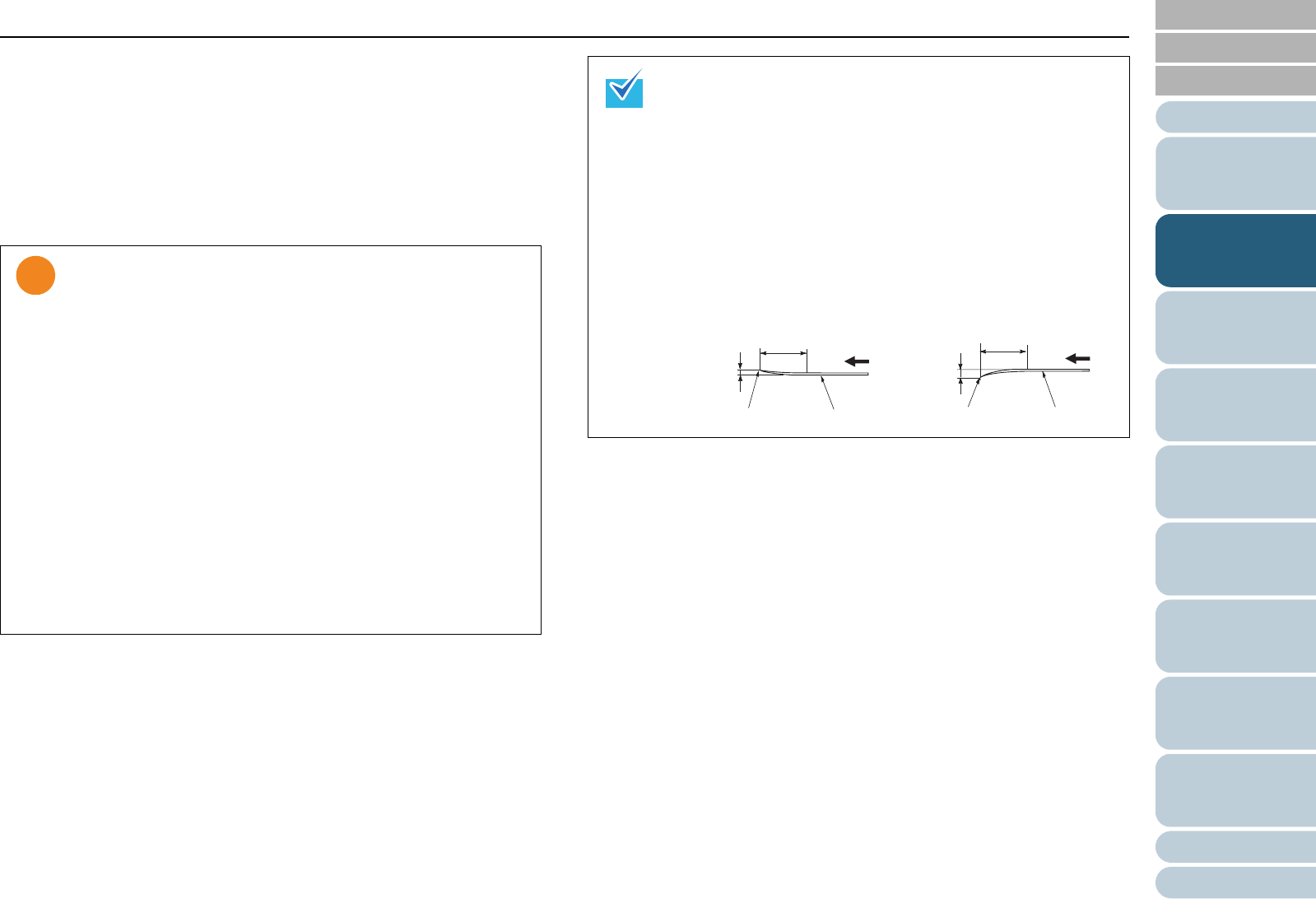
Contents
Index
Chapter 2 How to Load Documents
Appendix
Glossary
Introduction
TOP
31
Configuring the
Scan Settings
How to Use the
Operator Panel
Various Ways to
Scan
Daily Care
Troubleshooting
Operational
Settings
Replacing the
Consumables
Scanner
Overview
How to Load
Documents
The following types of documents must not be scanned:
z Paper-clipped or stapled documents
z Documents on which the ink is still wet
z Documents smaller than A8 size
z Documents wider than 216 mm (8.5 in.)
z Documents other than paper such as fabric, metal foil and OHP film
z Important documents such as certificates and cash vouchers which
must not be damaged
z Since carbonless paper contains chemical substances that
may harm the rollers (e.g. pick roller), take note of the
following:
Cleaning : If paper jams occur frequently, clean
the pad assy and pick roller.
For details, refer to "Chapter 6 Daily
Care" (page 85).
Parts replacement : The life of the pad assy and pick
roller may end sooner compared to
scanning wood-containing papers.
z When scanning wood-containing papers, the life of the pad
assy and pick roller may end sooner compared to scanning
wood-free papers.
z Pad assy and pick roller may be damaged when a photo/
sticky note on the document contacts these parts during
scanning.
z The surface of the document may be damaged when
scanning gloss papers such as photographs.
z To scan documents that are semi-transparent, slide the
[Brightness] bar to light to avoid bleed through.
z When you scan documents written with lead pencil, make
sure to clean the rollers frequently. Otherwise, the rollers
will be contaminated which may leave black traces on the
document or cause feeding errors.
For details, refer to "Chapter 6 Daily Care" (page 85).
z If multifeeds, pick errors or paper jams occur frequently,
refer to "8.3 Troubleshooting" (page 104) for
troubleshooting.
z All documents must be flat on the leading edge. Make sure
that curls on the leading edge of the documents are kept
within the following range.
30 mm or more
Feeding direction
3 mm
or less
5 mm
or less
30 mm or more
Feeding direction
(0.20 in.)
(0.12 in.)
(1.18 in.)
(1.18 in.)
Leading edgeLeading edge
Scanned side Scanned side
